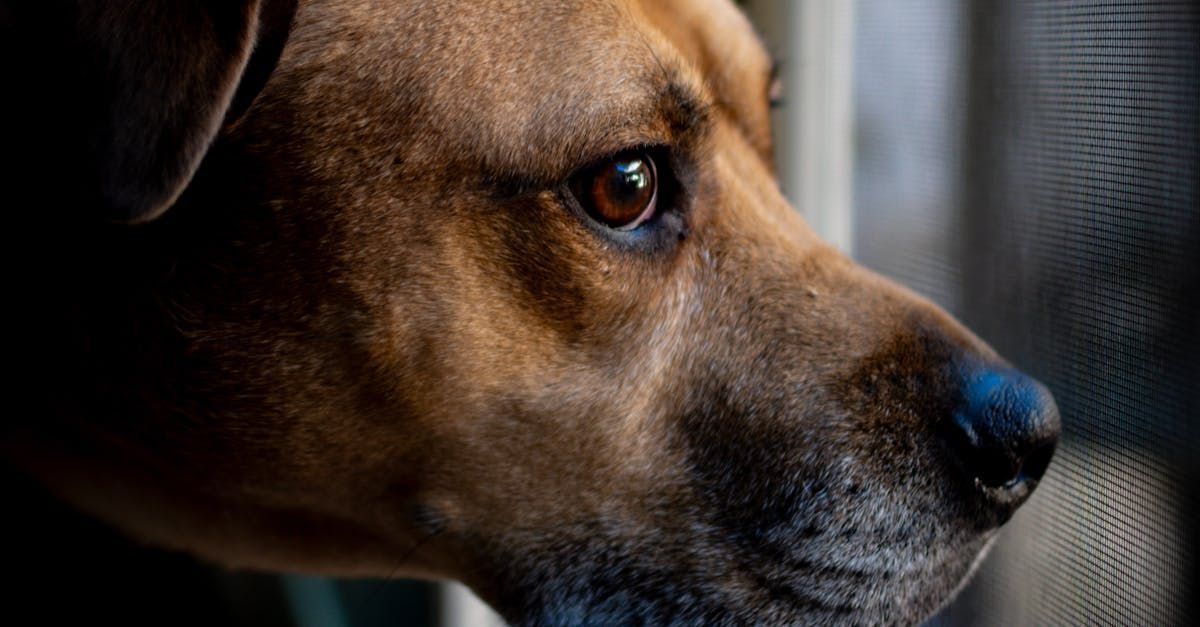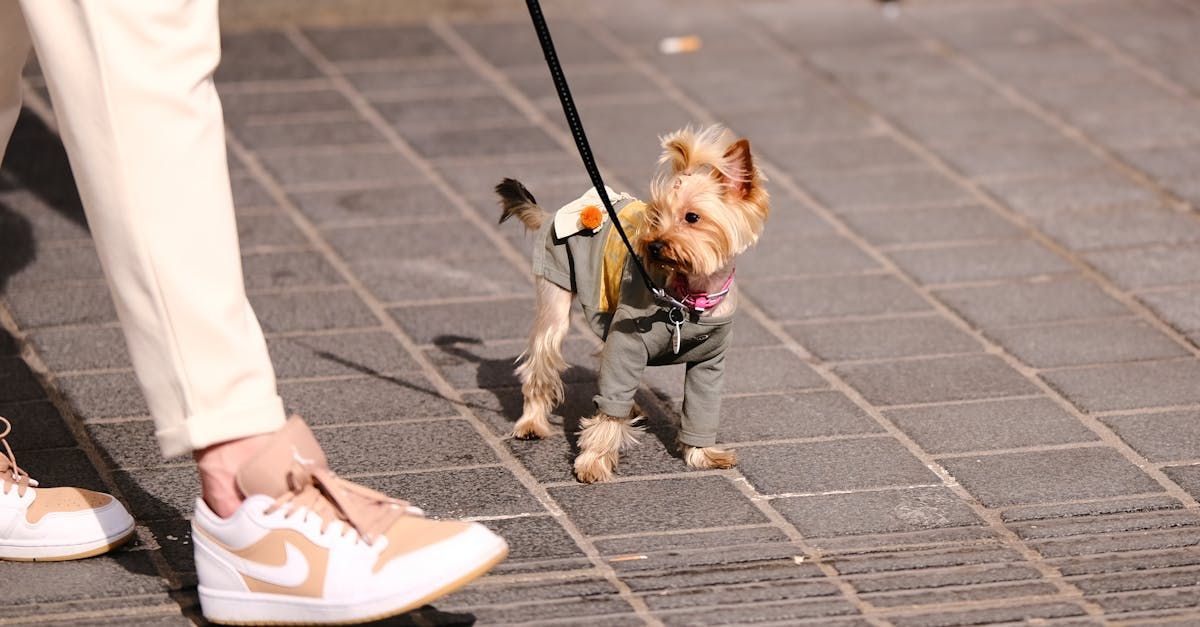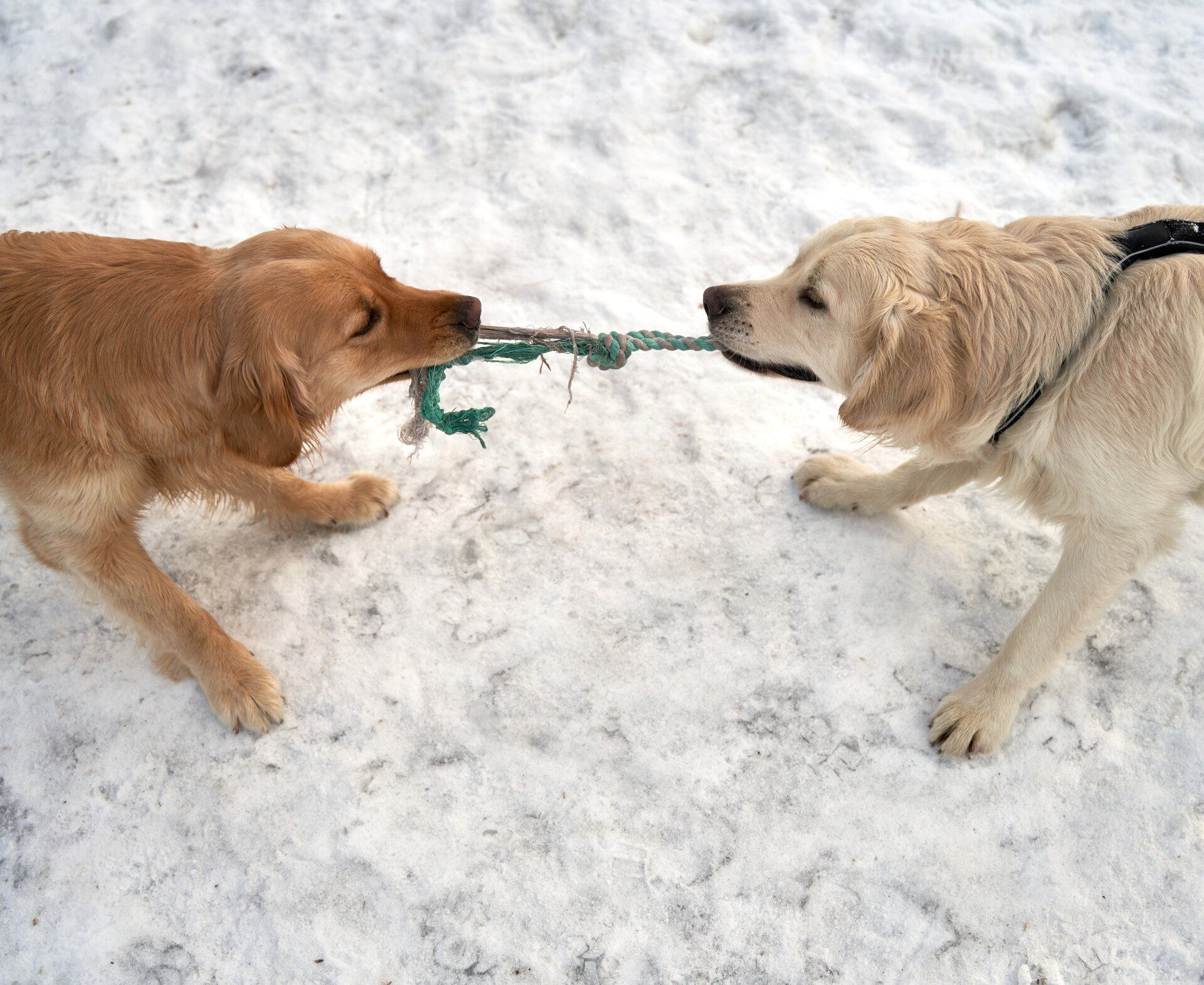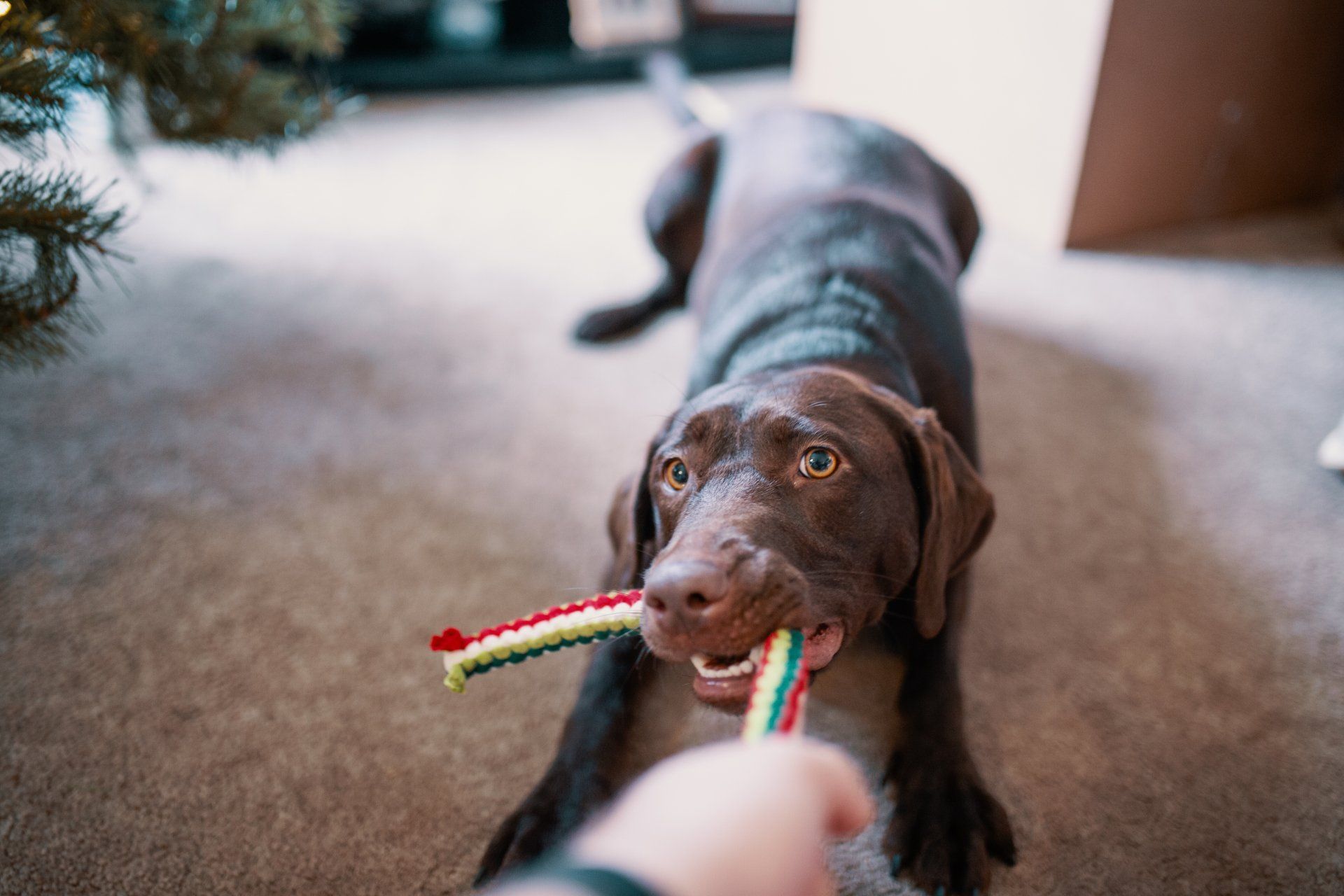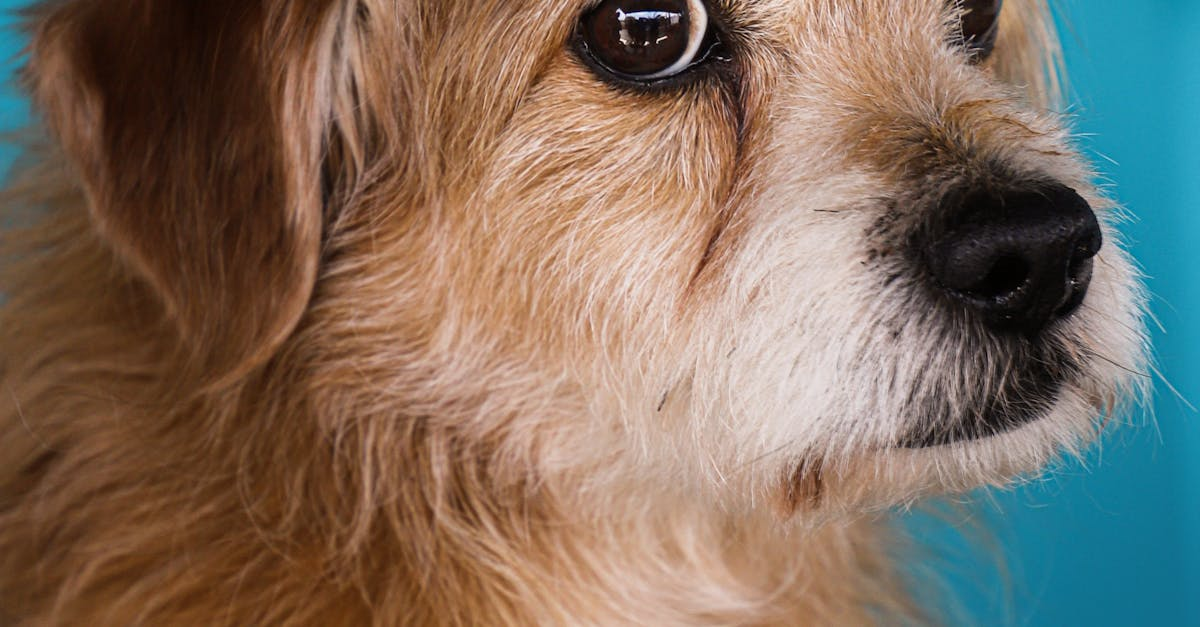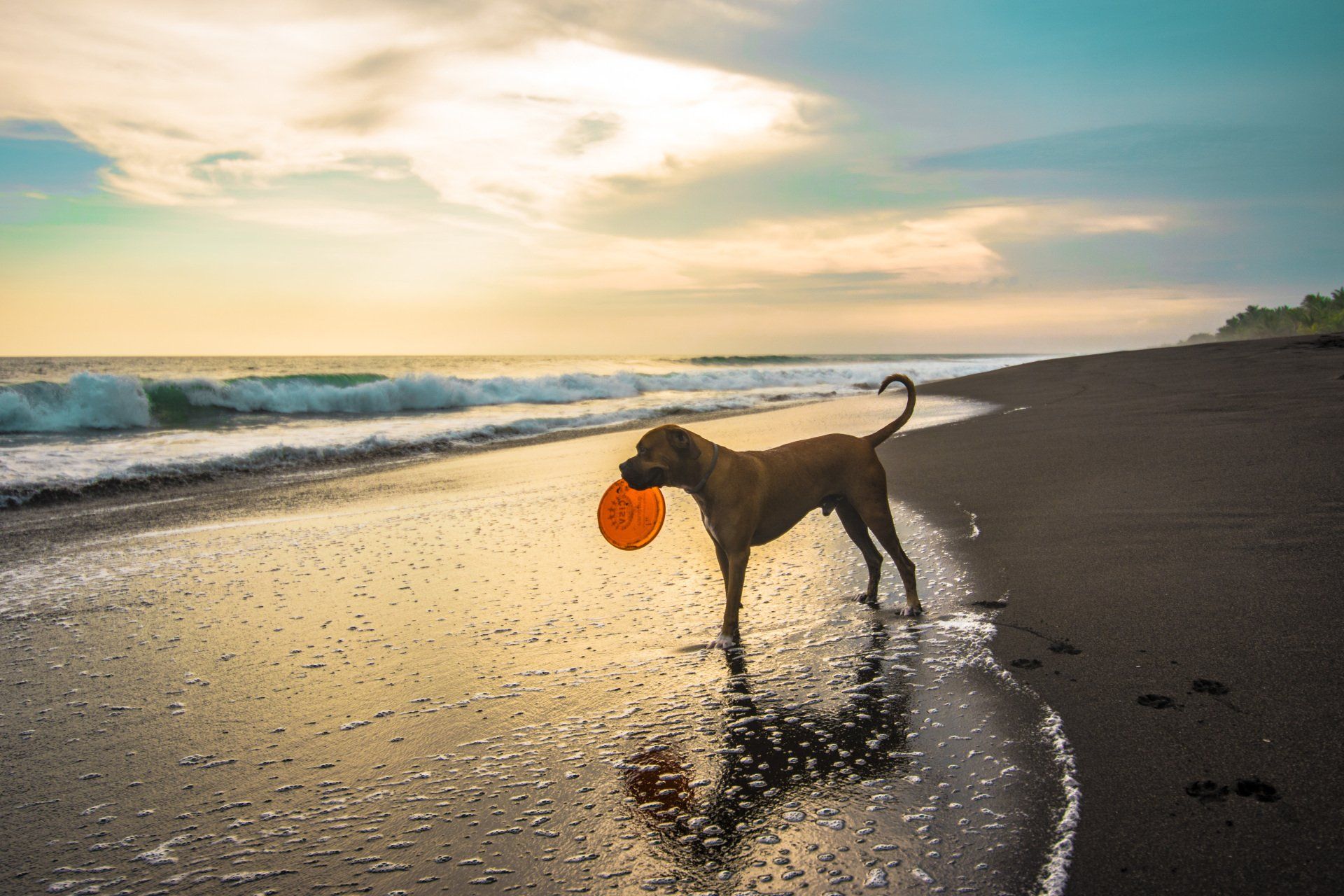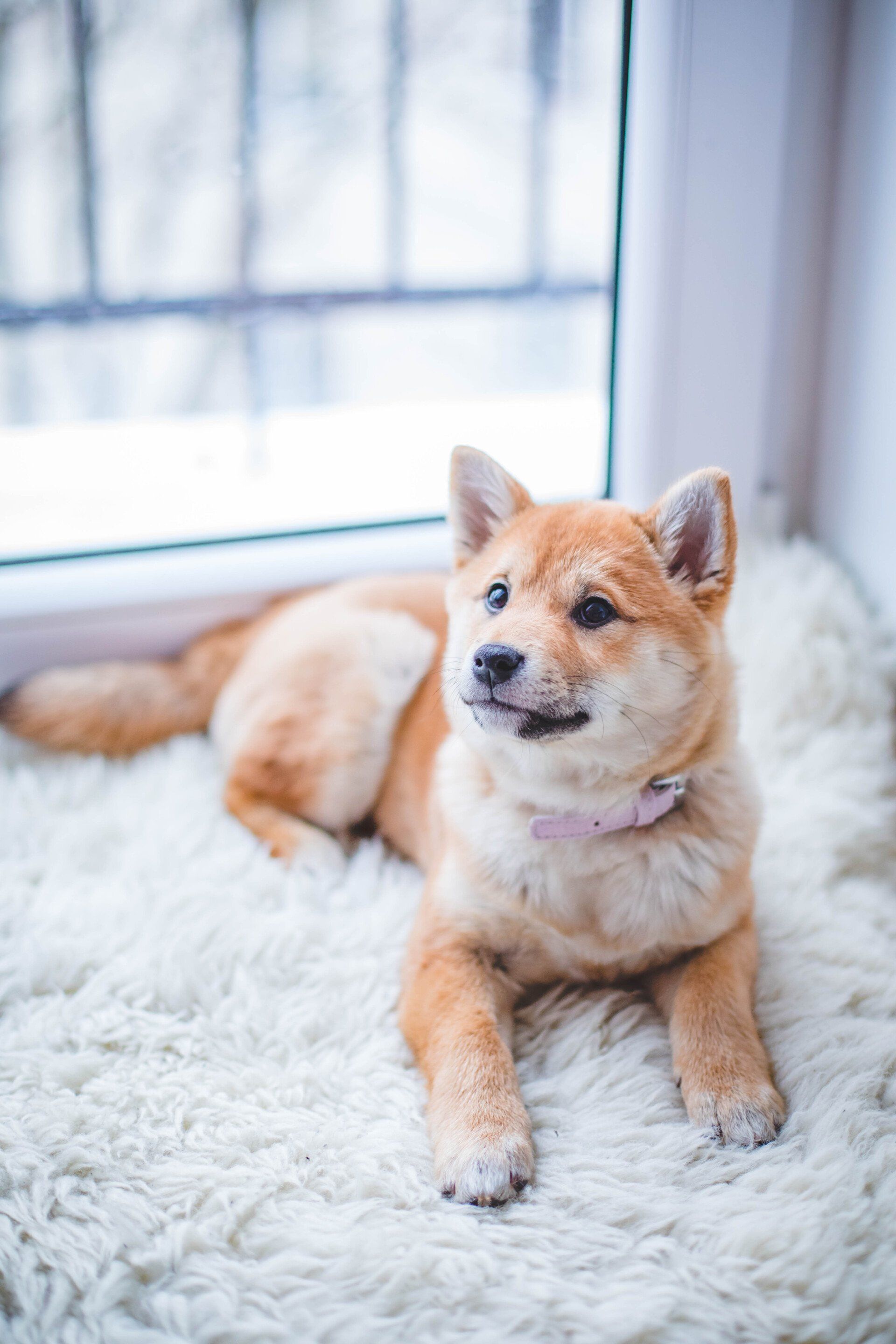The Importance of a Crate for Your Dog
A Training Tool
A crate is a tool that you should always take advantage of at any point in a dog’s life. First things first: a crate for your new dog is not a cage. It is a piece of essential equipment that you will use to facilitate training.
A crate for your dog means you are controlling its environment in order that it will neither harm itself nor damage your home. The latter is also to protect the dog. If it tears the stuffing out of the couch pillows, it could swallow some and get a bowel obstruction. An emergency vet bill can be expensive and might not even save your pet.
When you bring a new baby home from the hospital, you make your home safe for it and place it in a protective car seat. This is no different than providing a crate for you dog. It is secure so that it will not be thrown around the car, possibly injuring it. Providing a crate for your dog is essential because you are removing any opportunity for the dog to get itself into trouble. When used at home, it keeps it from chewing wires or swallowing something that could harm or kill it.
Crate training necessities
A crate is part of controlling the environment. Just as you would never leave a child unattended or unsecured in your home, supplying a regulated setting gives your new puppy the best chance to flourish without risk to itself. Not only does this protect the dog, it also keeps it from damaging the house and learning inappropriate behaviors.
If the dog is crated while you’re gone, he’s not going to get into the trash because he is unsupervised. If the dog is crated while you’re at work, she’s not going to get on the counter and eat the leftover sandwich. When a dog has those experiences, it reinforces bad behaviors, making the acts of digging through the trash and eating off the counter rewarding. This leads to repeated unacceptable behaviors.
By keeping your dog in the controlled environment when utilizing a crate, it doesn’t learn a bad habit that has to be broken later. The long-term goal is for the dog to acquire proper training and earn its freedom. This means that it has gained the ability to be left out of the crate overnight and while you are away from home.
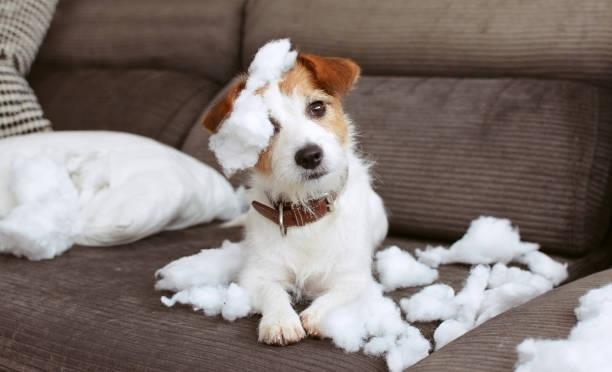
This is not cute. You use a crate to control the environment so your pet does not do something that will harm him.
This process takes a good two to three years before the dog reaches that level. This means that the dog has to develop a maturity level where it is no longer a spastic puppy. During that training period, you must be aware of how the dog is being conditioned. It is being conditioned to not do bad things. You are controlling the environment.
There are some dogs that you can bring home as a puppy and never have to crate. The dog never does anything wrong. Never uses the bathroom in the house. Never chews up the couch cushions, leaving stuffing spread around the living room like a storm had just rolled through. He never gets into anything.
However, this is not the norm. Every once in a while, we will come across a dog that already possesses the desired positive behaviors. On the other hand, most dogs do need the positive reinforcement of a controlled environment to learn the necessary training.
Many people do not think about the lack of structure they’re providing their dogs by not using a crate as an essential part of training. Rules need to be established when you bring your puppy home. Structure and a controlled environment lead to a rewarding experience with your dog, preventing it from destroying its habitat—your house—and creating a bitter series of events.
The methods we utilize at Southern Warrior K9 have been proven with multiple, award-wining dogs. Our training philosophy of providing a controlled environment puts us on the podium with championships in contests across the country. It works and creates a strong relationship between the dog and its owner.
Structured training allows the owner to teach the dog to cope with the real world. If a dog does not possess the ability to cope, neither the pet nor its owner will have an enjoyable relationship. That situation can lead to two outcomes that are not good for the dog: neglect or abandonment.
To make the experience of owning a dog enjoyable, it takes a little bit of work and structure. The crate is the first step in providing the necessary environment to promote effective training.
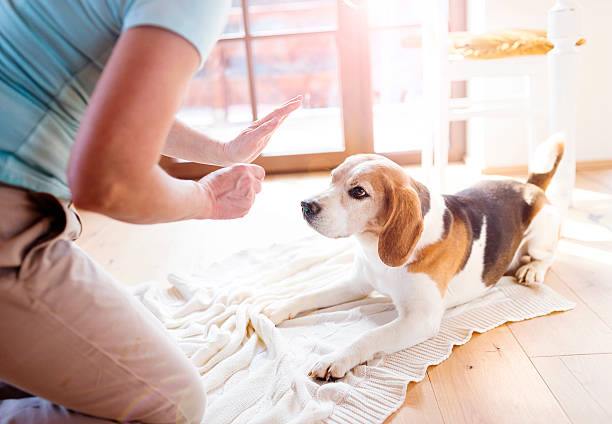
Utilizing a crate correctly is a vital piece of training your pet.
In last month’s blog, we talked about how a crate is utilized in potty training for a new puppy. This is all part of showing your dog the real world, getting it used to the things it can and can’t do.
Every time you take your puppy out of its crate, you’re giving it small training sessions. Everyone knows you can’t take a child in kindergarten and place it in a two-hour college course, expecting it to succeed. By taking the dog out to do training sessions, you’re providing structure in small, incremental learning moments.
With the sessions broken down like this, the dog is able to retain that information better. When you take your dog out of the crate, you take it outside and start conditioning it to the training sessions immediately. The puppy doesn’t even know what is happening. I am providing it with the controlled environment wherein it has the best chance to succeed.
When you carry your puppy outside, it learns to relax while you hold it. This teaches the dog how to be handled by a person. It learns that when you hold it, it is not going to be hurt. If you let the puppy out of the crate without carrying it outside, you are presenting it with an uncontrolled environment where it can use the bathroom before it gets outside. At that moment, the puppy learned that it gets to relieve its bladder there too.
By keeping it in a crate and taking it outside to use the bathroom, the puppy doesn’t have the opportunity to go in the house and learn a behavior that must be broken later. By taking the puppy from the crate and putting it on the ground outside to go potty and celebrating, the puppy learns that going potty outside is rewarded from the very beginning. This reinforces the desired behavior.
The crate allows the dog to be kept in a safe, controlled environment where all of its needs are met. Not only does it prevent a torn up couch or messes from being made, it provides the structure from which the dog has the best possibility to learn.
When you get your new puppy, you have to remember that like young kids, young dogs learn best in small increments. There are nap times and play times and learning times. You take it out of the crate, you teach it something, and you play. Then you put it back in to let it rest. While the puppy is resting, its brain is processing the information that you gave it.
In the wild, a mother wolf takes her pups out of the den for play that teaches it how to hunt and survive. This is the concept that is replicated by using a crate. Through the games in addition to the training, the puppies are learning. All of this is in line with their instincts deep inside them. They learn foundational skills. This helps them retain the information.
What you should and shouldn’t do with a crate
The crate should always be clean. This is your new puppy’s home. This is where it sleeps. It rests in the crate and sorts through the information it learns each time it is taken out. No one likes to sleep in a dirty, stained bed. Your puppy is not going to want that either.
I do not use wire crates at Southern Warrior K9. They have lots of access holes where the dog can grab something and pull it into the crate. This reinforces undesirable behaviors that have to be broken later.
They are also notorious for dogs escaping because they are flimsy and not put together well. Once the dog learns how to escape from a wire crate, the dog has also learned to use its mouth to tear open the structure. This becomes a destructive behavior.
Some people will use zip ties to repair a wire crate after the dog has escaped from it. They may use multiple zip ties, thinking that it makes the structure tougher and reinforced. What it teaches the dog is that it must try harder with its mouth to get out.
When owners realize that the dog has learned to get out of a wire crate, they may purchase a better, more solid crate for more money. Because it has escaped from the wire crate, the dog gets even more destructive in its attempt to get out. The dog could hurt itself in the process trying to tear up the more expensive crates.
I like the airline crates, the solid plastic crates, and the big metal impact crates. For me, the Gunner crates and the Ruff Land kennels are the best crates. They are crash test rated. They are big. Though they cost more than wire crates, they are effective and a dog will not hurt itself learning to escape from them. And they have durability, allowing you to use them for multiple dogs.

Check out Gunner crates at https://gunner.com/products/g1-kennel for quality product.
You can feed your dog in a crate but do not leave its bowl inside. When I first bring a puppy home, I throw a handful of food inside so they chase it. This is a good experience for them, allowing them to associate the crate with something rewarding.
Saying that, we do not use crate time as punishment. However, if a dog is unruly in the moment, I will put it into the crate for some rest time, allowing it to settle down. It is not for punishment; it is for management.
Maybe we tried to work on the place command, but the puppy kept getting off and running around. At some point, if the place command cannot be reinforced, you put it in the crate where it can rest and relax.
Another thing that you should not do is put two dogs in one crate. I want the dog to understand that the space does not have to be shared with other dogs.
No one should let their children crawl into the crate with the dog. That can be dangerous. On the surface, it may look harmless—the child just wants to pet the new puppy. Kids love puppies. Children most likely do not know what is and what isn’t appropriate when dealing with dogs. Sometimes children can make dogs nervous.
If you let your child go into a crate with a dog that is nervous around children, the dog’s option for flight has been removed. When a dog feels nervous, it only has two options: fight or flight. By allowing a child into a dog’s crate, the animal is being backed into a corner, and its only avenue of escape is to use its mouth.
This situation puts both the child and the dog at risk for harm and irreparable damage. This is not a trivial matter. In the worst cases, it can lead to serious injury or death.
Another thing we recommend you avoid is leaving stuffed animals and related toys in the crate. A dog can chew these up or destroy them, often swallowing them and leading to internal damage. A late-night trip to the emergency vet will be expensive and not easy on the wallet or nerves.
One thing that I have put in the crate with a dog is a hard Kong because they are pretty durable. I also like to put peanut butter in the Kongs and freeze it. When you do this, the dog will lick on it all night or day without destroying it.
Some people use hooves or bully sticks. I avoid using rawhide bones because they can shred. Antlers are good because it is something hard to chew on that is not going to break off in a big piece that can get stuck in the dog’s digestive track.
There is a point where you remove the crate
There will be a point in a dog’s training where it will earn its freedom and be trusted to remain outside of its crate overnight while you are sleeping or gone all day at work. This occurs when the dog has shown enough responsibility to be free.
Many people give the crate up too soon because they want to trust the dog. This is perfectly understandable. However, you can’t let a dog have freedom just because that’s what you want or it will make you feel better. That is not doing what is best for your pet.
You need to pay attention to the dog. It will tell you when it is ready to have the freedom of being left out of the crate. You have to decide if that dog will be safe if you left it out. What I mean by safe is that the dog will not destroy and eat something that will kill it. Parents keep items that can harm their young children out of reach. You should follow this rule for your new pet.
If your dog has not developed the maturity to handle the responsibility of being free, keeping it out of the crate can lead to the dog getting injured or killed. Chewing on an electrical cord that is plugged in can kill it. Eating a pillow with stuffing can get stuck in its digestive tract and kill it. Getting into cleaners or rat poison under the sink can kill it. Getting into the fridge and eating the chocolate cake can kill it.
A dog continuing to display those behaviors that can lead to it getting injured or killed has not earned its freedom. Every dog is different. Some dogs can be left out of the crate by six or nine months of age. You can let them sleep on the couch when you leave for work, and when you get home from work, they’re still on the couch.
Some dogs, on the other hand, do not settle down enough and gain the needed maturity until they reach two or three years. Some dogs never settle down.
I have a German Shepherd that is a very high-drive working dog that has worked his entire nine-plus years. To this day, I still cannot leave him out of the crate. Why? He’s going to go mess with the other dogs in crates or find stuff to get into. He does not have it in him to be trusted unsupervised.
I know another German Shepherd that earned her freedom quickly. She sits at the end of the sofa when her owners leave the house. When they return, she hasn’t moved and is excited to see them.
Saying a dog has to earn its freedom does not mean that it can’t ever be let out of the crate except to go to the bathroom, for training, or eating. If you’re at home and you have a six-month old rambunctious puppy, put it a leash on it and attach the leash to your belt loop. This keeps the puppy always right there by you. By maintaining this closeness, you are able to say, “No, don’t get in the trash” or “No, don’t jump on the counter.”
Then the puppy is learning the rules of the house in that moment. It is learning how you communicate with it and it with you. This is the purpose of crating your dog—to teach it and train it. It makes the relationship between the two of you more enjoyable.
What is the right size of crate?
This is simple. Your dog needs to be able to stand up and turn around. Nothing more complex than that.
If you get a crate that is too big, especially with young dogs, they will learn to go to the bathroom in one corner and lay down in the other corner. Dogs are typically clean animals, and if you give them just enough room to lay down, stand up, and turn around, then they’re not going to want to use the bathroom in the crate.
Another benefit is feeding the dog in the crate. Dogs do not want to use the bathroom where they eat. Generally speaking, most dogs want to be clean. You have the outliers that will eat their own feces and have an unclean den, or crate. This is not the norm.
By keeping your dog in a crate that is just big enough for it to stand up and turn around, you minimize the chance that it will use the bathroom in there. Just as people like to live in a clean home, dogs do not generally like to have a dirty den.
A correctly-sized crate also makes it easer for potty training. If the crate is a proper fit for the dog, it is not going to learn the incorrect behavior of using the bathroom in the crate. We discussed how to use the crate in effective potty training in the previous blog entry.
More crate rules
Sometimes, you will get a dog that likes to bark while in the crate. A lot of people assume this means that the dog has separation anxiety. More likely, it is exhibiting a learned behavior. When it was a puppy, it may have whined or barked to be let out. Then someone felt bad or got tired of listening to it, and they let the puppy out.
The puppy may later on try even harder to get let out of the crate because it has learned what it needs to do to have the door opened. This reinforces the behavior. The puppy learns the key to freedom is bark or whine even more.
If a puppy has displayed this behavior and I can’t get it to stop barking and whining while in the crate at night in less than a week, then at that point, we start using a bark collar. We only use the bark collar in the crate.
What this does is teach the dog that once it goes in the crate, it is quiet time. It knows it is not allowed to bark in the crate. This needs to be conditioned as early as possible. Some dogs go in the crate, and they’re quiet all the time and you never need to worry about it. Other dogs need to unlearn the behavior of barking or whining in the crate.
As soon as we put the dog in the crate, the bark collar goes on. As soon as the puppy or the dog is taken out of the crate—in the morning, for training, or for any reason—the bark collar comes off.
Some people think bark collars are bad because the dog can become collar wise. If it is used in the correct manner—every time the dog goes in the crate—the dog does not associate the collar with being quiet but learns that is to be quiet in the crate.
Wrap up
Remember, the crate is not punishment. It is not a cage. It is a training tool to facilitate the learning of desired behaviors from your puppy. And remember, the majority of dogs will earn their freedom so they can be kept out of the crate while you are at work or in bed at night.
The crate teaches your dog boundaries. What is acceptable and what is not. When used properly, your dog will not mess in the house while you are gone or sleeping. When used properly, it will not get in the trash or get stuff off the counter while you are gone or sleeping.
Make sure you get the right size of crate for your dog, and make sure you get one it is not going to tear up. Buy once, use once.
Properly used, a crate is just like any other piece of training equipment and will enhance your relationship with your dog.
Request a Phone Call from a Dog Trainer
We'll be in touch as soon as possible.
Dog Training Inquiry
Thank you for contacting Southern Warrior K9. We will get back to you as soon as possible
Oops, there was an error sending your message. Please try again, or email us directly at SouthernWarriorK9@gmail.com.
Contact Information:
Phone: (405) 326-0055
Email: SouthernWarriorK9@gmail.com
Address: 10451 OK-9, Norman, OK 73026
Disclosures
* Southern Warrior K9, LLC, and its training programs are not affiliated, sponsored, endorsed, approved, or associated with the American Kennel Club or the AKC Canine Good Citizen testing program. For more information about the AKC Canine Good Citizen testing program, please see https://www.akc.org/products-services/training-programs/canine-good-citizen/
** Nothing on this website should be considered legal advice. If you have legal questions about whether your dog qualifies for protected legal status as a service dog, please consult an attorney.
All Rights Reserved | Southern Warrior K-9, LLC.
